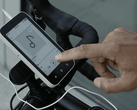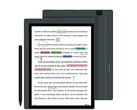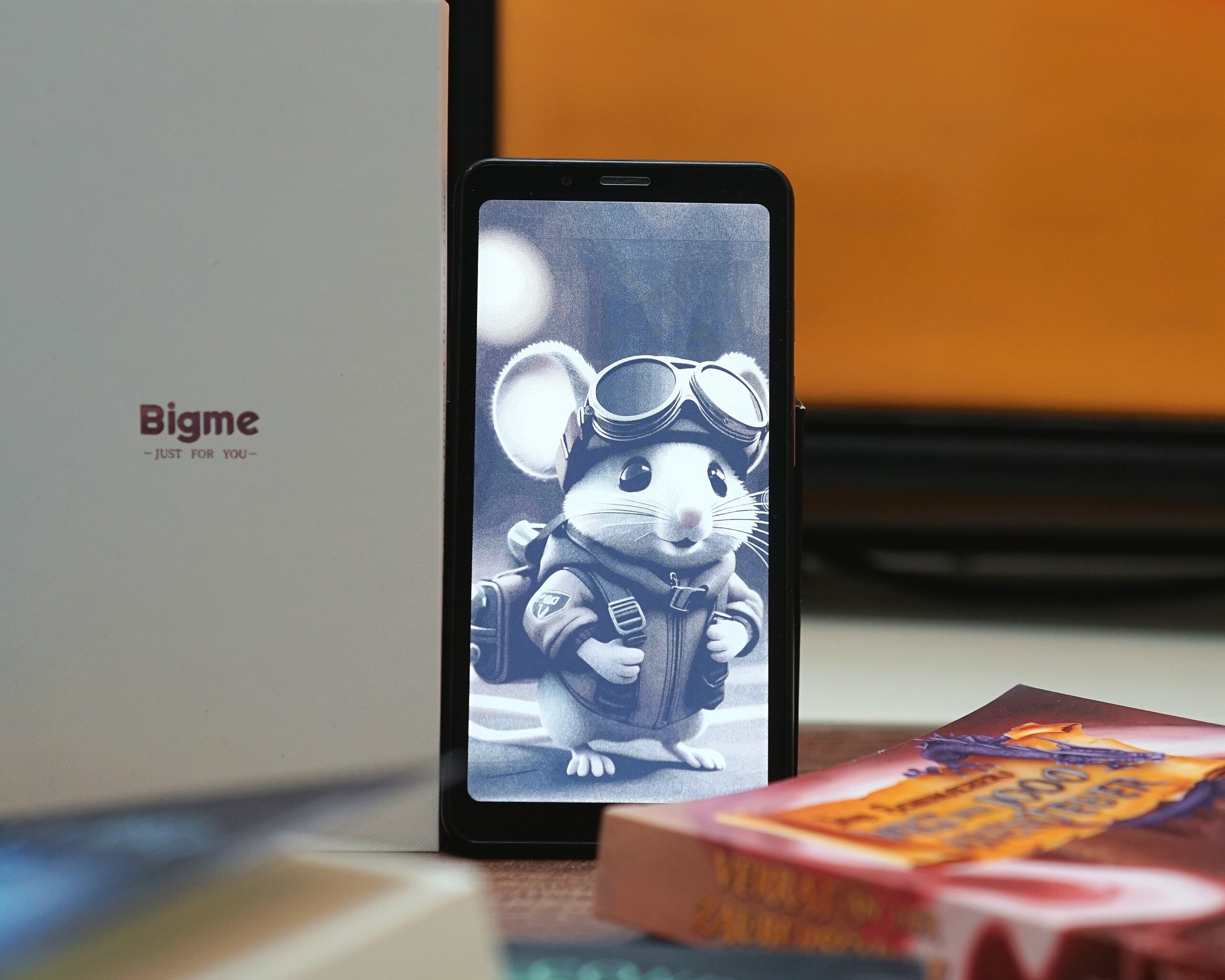
Bigme Hibreak smartphone review – The color display e-ink phone hits high frame rates
The smartphone e-reader.
Are e-ink displays too slow for normal use? Bigme aims to dispel this prejudice by proving you should be able to use the HiBreak as a normal smartphone and simultaneously enjoy all the benefits of electronic paper. But can the HiBreak also display videos in an acceptable manner?Florian Schmitt, 👁 Florian Schmitt (translated by Andrew Dickson) Published 🇩🇪 🇫🇷 ...
Bigme Hibreak verdict
With the Hibreak, Bigme has actually managed to bring one of the first e-ink-based products to the market that can also display videos at reasonable frame rates (according to the manufacturer, at up to 21fps). Of course, electronic paper can't yet offer the range of colors seen in an LED or OLED display and the resolution is also significantly lower when displaying colors. Nevertheless, we're impressed by the display quality Bigme has managed to coax out of the very economical screen.
The advantages of this concept are also great readability - even in bright environments and without the need for additional lighting. On top of this, and depending on how the phone is used, you'll get very good battery life. Because the displayed content remains after a single image is displayed, you won't experience any flickering with e-ink displays and this makes them very suitable for users sensitive to this issue.
Apart from that, you get a fully-fledged 4G smartphone with telephone functionality, location capability, 128 of GB storage, a speaker and a camera. Although you shouldn't expect particularly high quality when it comes to the latter two.
You also shouldn't expect software updates to be too frequent, meaning you'll be more than likely stuck with the older Android 11. E-ink displays are generally very durable but aren't actually designed for the high refresh rates offered by the Bigme Hibreak. This means there's still an element of risk that the screen's durability will eventually be exhausted.
If you're looking for a second phone, can make good use of the advantages of e-ink technology in everyday life and only occasionally watch a video, the Bigme Hibreak is a technically well-executed, unusual and, in many situations, quite a useful smartphone.
Pros
Cons
Price and availability
The Bigme Hibreak can be purchased directly from the manufacturer for $249 (black and white version), and $279 will get you the variant with the color display. At the time of review, on Amazon, the black and white model will set you back $269 and the color one $279.
Possible alternatives compared
Image | Model / Review | Price | Weight | Drive | Display |
|---|---|---|---|---|---|
| Bigme Hibreak Mediatek Helio P35 MT6765 ⎘ PowerVR GE8320 ⎘ 6 GB Memory, 128 GB eMMC | Amazon: $175.00 List Price: 279€ | 170 g | 128 GB eMMC Flash | 5.84" 1440x720 276 PPI E-Ink | |
| Onyx Boox Palma Qualcomm Snapdragon 662 ⎘ Qualcomm Adreno 610 ⎘ 6 GB Memory, 128 GB UFS 2.1 | Amazon: 1. $269.99 BOOX Palma2 Mobile ePaper eB... 2. $399.99 BOOX Palma 2 Pro Mobile ePap... 3. $269.99 BOOX Palma 2 Mobile ePaper e... List Price: 300€ | 170 g | 128 GB UFS 2.1 Flash | 6.13" 1648x824 301 PPI E-Ink | |
| Onyx Boox Page Qualcomm Snapdragon 662 ⎘ Qualcomm Adreno 610 ⎘ 3 GB Memory, 32 GB eMMC | Amazon: 1. $11.90 Healing Shield Screen Protec... 2. $22.99 GOVTVA Magnetic Leather Case... 3. $23.99 BOZHUORUI Case for 7" Onyx B... List Price: 290€ | 195 g | 32 GB eMMC Flash | 7.00" 1682x1264 301 PPI E-Ink | |
| PocketBook Verse Pro Color unknown ⎘ unknown ⎘ 1 GB Memory, 16 GB eMMC | Amazon: $185.00 List Price: 169€ | 182 g | 16 GB eMMC Flash | 6.00" 1448x1072 300 PPI E-Ink | |
| Tolino Shine Color MediaTek MTK 8113T ⎘ ⎘ 0.5 GB Memory, 16 GB eMMC | Amazon: 1. $12.99 Case Compatible with 6" Kobo... 2. $12.99 Case Compatible with 6" Kobo... 3. $12.99 Fit for Kobo Clara Colour/Cl... List Price: 149€ | 173 g | 16 GB eMMC Flash | 6.00" 1448x1072 300 PPI E-Ink Kaleido 3 |
Table of Contents
- Bigme Hibreak verdict
- Specifications
- Case & features – A no-nonsense plastic chassis
- Communication and operation – Even mobile communication is on board
- Software, e-reading and sustainability – Older Android with app support
- Cameras – Only in emergencies
- Display – Faster than we imagined
- Performance, emissions and battery life – An SoC from yesteryear
- Notebookcheck overall rating
Bigme is a company that specializes in devices with screens based on electronic ink. Many of these were co-financed with the help of crowdfunding campaigns. E-ink displays enjoy many benefits but usually require a relatively long time to update the screen content. Therefore, this makes them unsuitable for rapidly changing content such as videos or games.
The manufacturer sent the Hibreak E-Ink smartphone to our test lab, and in front of us, we have a device that is said to offer up to 21fps. In addition, the variant with the optional color display also claims to be good at displaying moving images. Let's take a closer look at this $279 gadget.
Specifications
Case & features – A no-nonsense plastic chassis
You shouldn't have high expectations regarding the Bigme Hibreak's chassis: plastic is the dominant material here, and the rear's leather texture makes the phone a little easier to grip. All in all, the build quality is clean, and the smartphone is robustly resistant to twisting and pressure.
The bezels around the front of the screen appear quite wide, especially at the top and bottom, and give the smartphone a somewhat old-fashioned look. At 170 grams, the Hibreak is quite light in the hand.
128 GB of mass storage represents good value, especially compared to other e-readers, which often come with little storage space. The same can be said for the 6 GB of RAM since it allows you to run more complex apps and multitask.
Apart from that, you shouldn't expect much additional tech. The USB 2.0 port on the bottom is for data exchange and charging, and Bluetooth 5.0 is a fairly old standard for wireless communication with other devices. Unfortunately, you'll have to do without NFC for contactless payment.
The built-in nano-SIM slot is accompanied by a microSD slot.
| SD Card Reader - average JPG Copy Test (av. of 3 runs) | |
| Onyx Boox Palma (Angelbird V60) | |
| Onyx Boox Page (Angelbird V60) | |
| Average of class Smartphone (5.72 - 58.9, n=69, last 2 years) | |
| Bigme Hibreak (Angelbird V60) | |
Cross Platform Disk Test (CPDT)
Communication and operation – Even mobile communication is on board
WiFi 5 is the fastest Wi-Fi standard supported by Bigme Hibreak. As expected, the review device achieved transmission speeds of around 280 - 375 Mbit/s. We tested this with our reference router, the Asus ROG Rapture AXE11000. These transmission speeds also remain relatively steady, with only one brief dip in reception quality.
4G is the fastest standard available for mobile network communication. The range of frequencies is acceptable, meaning trips abroad are also possible. However, if you are planning a new trip, try to find out in advance whether you can use the phone there. The reception was quite good in our random tests, but in difficult situations such as finding yourself located between tall buildings, there was a brief dip in reception quality.
Navigation via satellite networks is possible and worked well in our short random test.
The touchscreen is easy to use, but the relatively low maximum frame rate of 21fps means that inputs are not always immediately visible on the screen. The phone usually responds quickly enough, even to fast keyboard inputs, but conventional smartphones are still much more precise and more pleasant to use.
Biometric user recognition is not possible due to the absence of a fingerprint scanner.
| Networking | |
| iperf3 transmit AXE11000 | |
| Average of class Smartphone (49.8 - 1828, n=181, last 2 years) | |
| Onyx Boox Page | |
| Average 802.11 a/b/g/n/ac (10.5 - 718, n=224) | |
| Onyx Boox Palma | |
| Bigme Hibreak | |
| PocketBook Verse Pro Color | |
| Tolino Shine Color | |
| iperf3 receive AXE11000 | |
| Average of class Smartphone (52 - 1857, n=181, last 2 years) | |
| Bigme Hibreak | |
| Average 802.11 a/b/g/n/ac (20.1 - 695, n=223) | |
| Onyx Boox Palma | |
| Onyx Boox Page | |
| PocketBook Verse Pro Color | |
| Tolino Shine Color | |
Software, e-reading and sustainability – Older Android with app support
The operating system is based on Android 11 but also adapted to the display's special capabilities: Reader and note apps are pre-installed, and you can add additional ones via app stores. However, you shouldn't expect further system updates - even the security patches are already a few years old. As a user, at least you automatically get a basic level of security via updates to Google's Play Services.
We should emphasize that the 2:1 screen format is not ideal for reading documents because, depending on how the smartphone is held, very little fits on the screen, either in width or height. This is an area where tablet-format e-readers are more comfortable and do a better job. Otherwise, the Hibreak is less purely geared towards reading documents but, instead, tries to present itself as a conventional smartphone. The homescreen is also more in line with the standard Android version, with many app icons instead of a separate library for books and documents, as seen in other readers.
However, BookShelf has its own reader app for documents, where you can make many settings while reading: for example, the contrast, format or page movement. Automatic scrolling is also possible. However, the translation and organization of the settings are sometimes odd. You can also easily install and use other reader apps, and thanks to its speaker, the Hibreak is also very suitable for audiobooks.
In terms of sustainability, the streamlined packaging is a plus point, and a USB cable is not included - both of which may prevent unnecessary electronic waste. Otherwise, the phone is packaged in a plastic film, and hardly any obvious efforts have been made to ensure sustainability: the device is neither easy for the user to open and repair nor is there any information about the materials used.
Cameras – Only in emergencies
The efforts to provide the most fully-fledged smartphone possible can also be seen in the camera setup: The rear and front cameras mean you can even take selfies using the e-ink smartphone. Of course, the e-ink screen does not offer as accurate a preview as other types of screens. This means the real result is usually only visible afterwards on another display or when printed.
The main rear camera has a resolution of 13 megapixels and possesses an LED flash. The resulting photos are not particularly detailed and become quickly overexposed. However, the camera is useful for documenting a scene or scanning documents. In low light, the poor sharpness and low dynamic range in both bright and dark areas are negatives.
Videos can be recorded at a maximum of FullHD at 30fps. However, the quality found here is also not particularly high, and the autofocus often pumps wildly until the right focus is found.
On the front, there is a 5-megapixel selfie camera. Similarly, it produces photos that are not very dynamic and has difficulty coping with bright backgrounds. The selfies look quite rough in terms of detail, and colors are reproduced in a slightly distorted manner.
Image comparison
Choose a scene and navigate within the first image. One click changes the position on touchscreens. One click on the zoomed-in image opens the original in a new window. The first image shows the scaled photograph of the test device.
Main camera plantMain camera environmentMain camera low light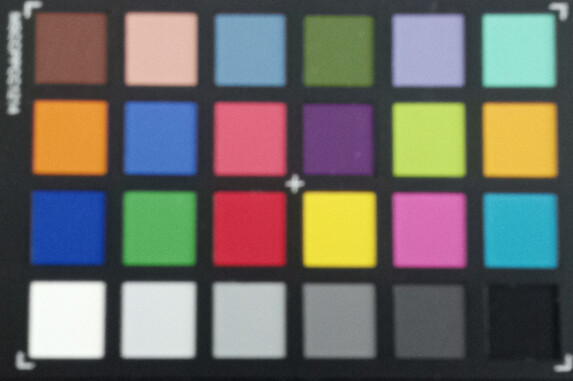

Display – Faster than we imagined
The Bigme Hibreak's headline feature is its e-ink display. You can find a more detailed description of the exact functionality of this display technology in this review. In short, small ink droplets are positioned using an electronic charge, thereby creating an image. The way it works is completely different to LED or OLED screens.
The screen offers many advantages, such as flicker-free reading, since a still image only needs to be created once and subsequently remains there. In addition, it can be read in ambient light without the need for any internal lighting.
However, when displayed in color, the resolution drops to a third because three ink particles are positioned to display one colored pixel. There is a limited number of colors with few color nuances present, and the displayed image looks more like it was painted with a pastel-colored pencil.
The Hibreak's e-ink panel offers a black-and-white resolution of 1,440 x 720 pixels and has a corresponding color resolution of 480 x 240 pixels. The even lower color resolution is particularly noticeable in moving images. Text, on the other hand, appears very crisp on the 5.84-inch screen, and reading is a very pleasant experience.
If required, the screen can be illuminated from the side via LEDs, and the result is that you can read effortlessly, even in complete darkness. At up to 162 cd/m², the lighting can also be very bright if desired. The Onyx Boox Palma has a clear advantage here, but the Bigme Hibreak's maximum brightness is easily sufficient for everyday use.
The screen's response time is, of course, slower than conventional cell phones, but our review device has already managed to make significant progress compared to other e-readers.
| |||||||||||||||||||||||||
Center on Battery: 162 cd/m²
Contrast: ∞:1 (Black: 0 cd/m²)
| Bigme Hibreak E-Ink, 1440x720, 5.8" | Onyx Boox Palma E-Ink, 1648x824, 6.1" | Onyx Boox Page E-Ink, 1682x1264, 7" | PocketBook Verse Pro Color E-Ink, 1448x1072, 6" | Tolino Shine Color E-Ink Kaleido 3, 1448x1072, 6" | |
|---|---|---|---|---|---|
| Screen | 144% | -13% | -14% | -30% | |
| Brightness middle (cd/m²) | 162 | 395 144% | 141 -13% | 140 -14% | 113 -30% |
| Black Level * (cd/m²) | |||||
| Brightness (cd/m²) | 400 | 141 | 142 | 110 | |
| Brightness Distribution (%) | 89 | 85 | 89 | 93 | |
| Greyscale dE 2000 * | 11.6 | ||||
| Gamma | 1.324 166% | ||||
| CCT | 7360 88% |
* ... smaller is better
Screen Flickering / PWM (Pulse-Width Modulation)
| Screen flickering / PWM not detected | |||
In comparison: 53 % of all tested devices do not use PWM to dim the display. If PWM was detected, an average of 8111 (minimum: 5 - maximum: 343500) Hz was measured. | |||
Display Response Times
| ↔ Response Time Black to White | ||
|---|---|---|
| 128.7 ms ... rise ↗ and fall ↘ combined | ↗ 48.4 ms rise | |
| ↘ 80.3 ms fall | ||
| The screen shows slow response rates in our tests and will be unsatisfactory for gamers. In comparison, all tested devices range from 0.1 (minimum) to 240 (maximum) ms. » 100 % of all devices are better. This means that the measured response time is worse than the average of all tested devices (20.2 ms). | ||
| ↔ Response Time 50% Grey to 80% Grey | ||
| 238.3 ms ... rise ↗ and fall ↘ combined | ↗ 38.2 ms rise | |
| ↘ 200.1 ms fall | ||
| The screen shows slow response rates in our tests and will be unsatisfactory for gamers. In comparison, all tested devices range from 0.165 (minimum) to 636 (maximum) ms. » 100 % of all devices are better. This means that the measured response time is worse than the average of all tested devices (31.6 ms). | ||
Performance, emissions and battery life – An SoC from yesteryear
For its SoC, Bigme has opted for the MediaTek Helio P35, a chip that is quite long in the tooth now and one you would only expect to find in cheaper smartphones. However, for an e-reader, it actually scores quite well in the performance department, even though our review device can't keep up with the Onyx Boox Palma - a chip that provides an even smoother operating experience.
You'll have to allow for a little lag when using and operating the Hibreak. When scrolling through large websites, content often takes a few seconds to load. The memory is also not very fast and stops short of giving the system a turbo boost.
Under longer loads, the case only heats up slightly.
The small speaker on the bottom edge of the Bigme Hibreak doesn't get particularly loud. But it does sound quite reasonable without suffering from any distortion. You shouldn't expect the sound to have bass or deep mids, but the speaker is well suited to listening to music or playing audiobooks in fairly quiet environments.
External audio devices can be connected via USB-C or Bluetooth. Only a few codecs are available for wireless playback, but they also include Hi-Res variants such as aptX HD or LDAC.
At 3,300 mAh, the battery is quite powerful for an e-reader, but with the Onyx Boox Palma, you get an even more powerful battery. The runtime in the Wi-Fi test with a comparatively bright screen was 12 hours and 35 minutes, and with minimum lighting and e-reading with relatively infrequent page updates, we recorded 18 hours and 46 minutes. This means the phone has relatively good stamina and can even get through a day's reading without any problems.
The e-ink smartphone can only be charged at a maximum of 10 watts, and a charger is not included. The phone coped with various chargers used in our test but needed well over 2 hours for a complete charging cycle.
| PCMark for Android - Work 3.0 | |
| Average of class Smartphone (4507 - 28557, n=188, last 2 years) | |
| Onyx Boox Palma | |
| Average Mediatek Helio P35 MT6765 (4507 - 5059, n=2) | |
| Bigme Hibreak | |
| Onyx Boox Page | |
| GFXBench | |
| 3840x2160 4K Aztec Ruins High Tier Offscreen | |
| Average of class Smartphone (0.54 - 62, n=212, last 2 years) | |
| Onyx Boox Page | |
| Onyx Boox Palma | |
| Bigme Hibreak | |
| Average Mediatek Helio P35 MT6765 (n=1) | |
| on screen Aztec Ruins High Tier Onscreen | |
| Average of class Smartphone (0.85 - 144, n=212, last 2 years) | |
| Onyx Boox Palma | |
| Bigme Hibreak | |
| Onyx Boox Page | |
| Average Mediatek Helio P35 MT6765 (2.2 - 4.9, n=12) | |
| 2560x1440 Aztec Ruins High Tier Offscreen | |
| Average of class Smartphone (1.2 - 129, n=211, last 2 years) | |
| Onyx Boox Page | |
| Onyx Boox Palma | |
| Bigme Hibreak | |
| Average Mediatek Helio P35 MT6765 (1.4 - 1.6, n=12) | |
| on screen Aztec Ruins Normal Tier Onscreen | |
| Average of class Smartphone (6.2 - 166, n=211, last 2 years) | |
| Onyx Boox Palma | |
| Onyx Boox Page | |
| Bigme Hibreak | |
| Average Mediatek Helio P35 MT6765 (3.5 - 7.7, n=13) | |
| 1920x1080 Aztec Ruins Normal Tier Offscreen | |
| Average of class Smartphone (3.4 - 367, n=211, last 2 years) | |
| Onyx Boox Page | |
| Onyx Boox Palma | |
| Bigme Hibreak | |
| Average Mediatek Helio P35 MT6765 (3.8 - 4.3, n=13) | |
| Octane V2 - Total Score | |
| Average of class Smartphone (2228 - 121337, n=200, last 2 years) | |
| Onyx Boox Palma | |
| Onyx Boox Page | |
| Bigme Hibreak | |
| Average Mediatek Helio P35 MT6765 (4347 - 7140, n=6) | |
| PocketBook Verse Pro Color | |
| Tolino Shine Color | |
| Bigme Hibreak | Onyx Boox Palma | Onyx Boox Page | Average 128 GB eMMC Flash | Average of class Smartphone | |
|---|---|---|---|---|---|
| AndroBench 3-5 | 243% | 110% | 98% | 1106% | |
| Sequential Read 256KB (MB/s) | 273.1 | 509.8 87% | 277.1 1% | 300 ? 10% | 2222 ? 714% |
| Sequential Write 256KB (MB/s) | 180.1 | 108.3 -40% | 116.6 -35% | 195.1 ? 8% | 1841 ? 922% |
| Random Read 4KB (MB/s) | 67.3 | 136 102% | 65 -3% | 85.9 ? 28% | 294 ? 337% |
| Random Write 4KB (MB/s) | 13.1 | 121.1 824% | 75.4 476% | 58.1 ? 344% | 334 ? 2450% |
(+) The maximum temperature on the upper side is 39.5 °C / 103 F, compared to the average of 35.2 °C / 95 F, ranging from 21.9 to 247 °C for the class Smartphone.
(±) The bottom heats up to a maximum of 43.1 °C / 110 F, compared to the average of 34 °C / 93 F
(+) In idle usage, the average temperature for the upper side is 22.6 °C / 73 F, compared to the device average of 32.9 °C / 91 F.
Bigme Hibreak audio analysis
(±) | speaker loudness is average but good (76.2 dB)
Bass 100 - 315 Hz
(-) | nearly no bass - on average 32% lower than median
(±) | linearity of bass is average (8.9% delta to prev. frequency)
Mids 400 - 2000 Hz
(+) | balanced mids - only 4% away from median
(+) | mids are linear (5.9% delta to prev. frequency)
Highs 2 - 16 kHz
(+) | balanced highs - only 2.8% away from median
(+) | highs are linear (6.1% delta to prev. frequency)
Overall 100 - 16.000 Hz
(±) | linearity of overall sound is average (25.5% difference to median)
Compared to same class
» 63% of all tested devices in this class were better, 7% similar, 30% worse
» The best had a delta of 11%, average was 35%, worst was 134%
Compared to all devices tested
» 78% of all tested devices were better, 5% similar, 18% worse
» The best had a delta of 4%, average was 24%, worst was 134%
Onyx Boox Palma audio analysis
(±) | speaker loudness is average but good (81.1 dB)
Bass 100 - 315 Hz
(-) | nearly no bass - on average 29.5% lower than median
(±) | linearity of bass is average (7.8% delta to prev. frequency)
Mids 400 - 2000 Hz
(+) | balanced mids - only 3.8% away from median
(+) | mids are linear (6% delta to prev. frequency)
Highs 2 - 16 kHz
(±) | higher highs - on average 6.5% higher than median
(+) | highs are linear (6.7% delta to prev. frequency)
Overall 100 - 16.000 Hz
(±) | linearity of overall sound is average (22.9% difference to median)
Compared to same class
» 70% of all tested devices in this class were better, 5% similar, 25% worse
» The best had a delta of 7%, average was 20%, worst was 129%
Compared to all devices tested
» 67% of all tested devices were better, 6% similar, 27% worse
» The best had a delta of 4%, average was 24%, worst was 134%
| Bigme Hibreak 3300 mAh | Onyx Boox Palma 3950 mAh | Onyx Boox Page 2300 mAh | PocketBook Verse Pro Color 2100 mAh | Tolino Shine Color 1500 mAh | |
|---|---|---|---|---|---|
| Battery runtime | 15% | -21% | -23% | -39% | |
| Reader / Idle (h) | 18.8 | 21 12% | 14.9 -21% | 14.5 -23% | 11.5 -39% |
| WiFi v1.3 (h) | 12.6 | 14.9 18% |
Notebookcheck overall rating

The Bigme Hibreak's e-ink display is certainly not yet on par with LED or OLED displays when displaying moving images or colors. But it does make the electronic paper screen more versatile. As a result, the smartphone is very well suited to being used as a secondary device or for special tasks. It's light, you can read long texts without getting tired, and the phone lasts a long time despite not having a very large battery.
Thanks to its fully-fledged 4G modem, ample memory and Android, many other uses are conceivable, such as an electronic notepad or navigation device.
Bigme Hibreak
- 01/21/2025 v8
Florian Schmitt
Transparency
The selection of devices to be reviewed is made by our editorial team. The test sample was provided to the author as a loan by the manufacturer or retailer for the purpose of this review. The lender had no influence on this review, nor did the manufacturer receive a copy of this review before publication. There was no obligation to publish this review. As an independent media company, Notebookcheck is not subjected to the authority of manufacturers, retailers or publishers.
This is how Notebookcheck is testing
Every year, Notebookcheck independently reviews hundreds of laptops and smartphones using standardized procedures to ensure that all results are comparable. We have continuously developed our test methods for around 20 years and set industry standards in the process. In our test labs, high-quality measuring equipment is utilized by experienced technicians and editors. These tests involve a multi-stage validation process. Our complex rating system is based on hundreds of well-founded measurements and benchmarks, which maintains objectivity. Further information on our test methods can be found here.










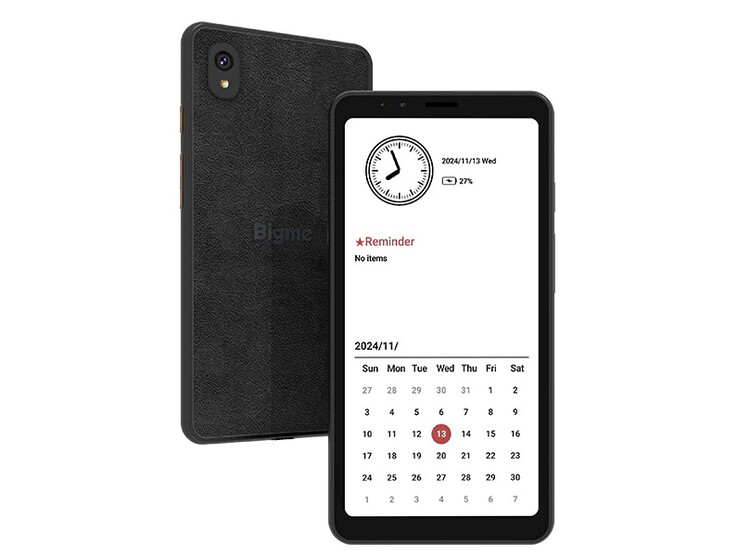





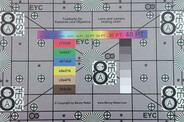
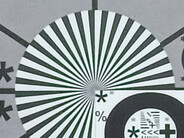



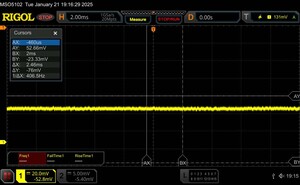
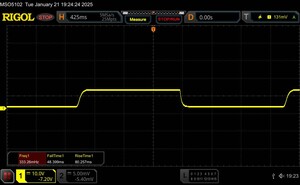

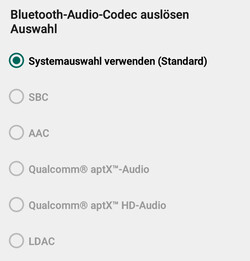
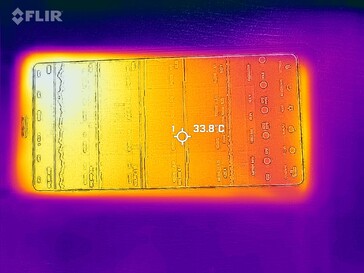
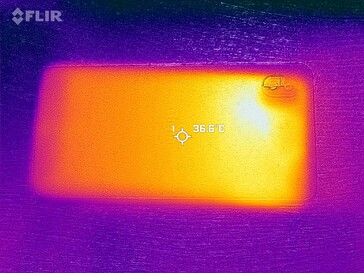
 Total Sustainability Score:
Total Sustainability Score: 